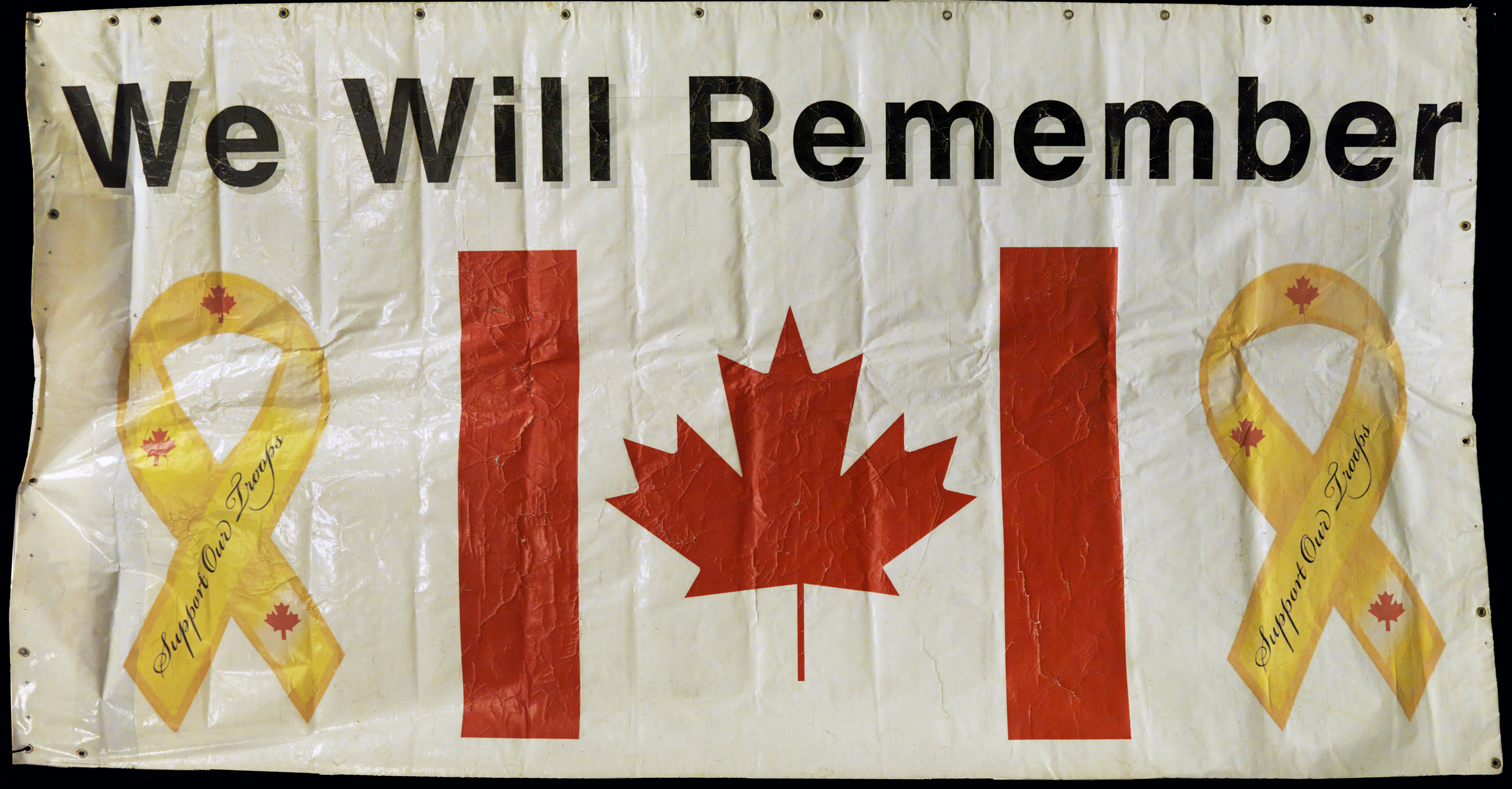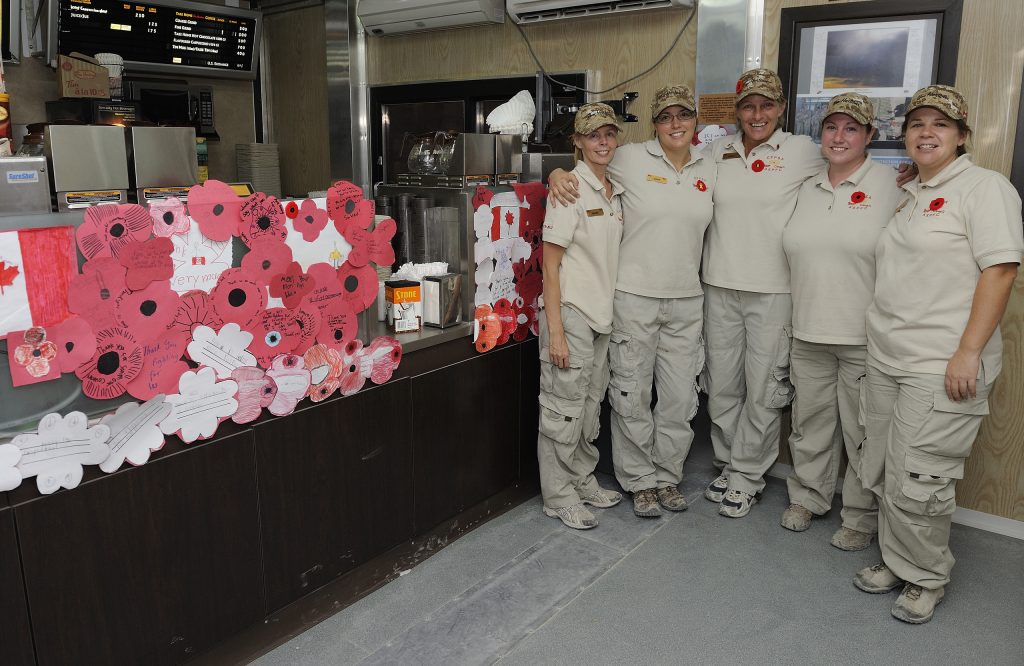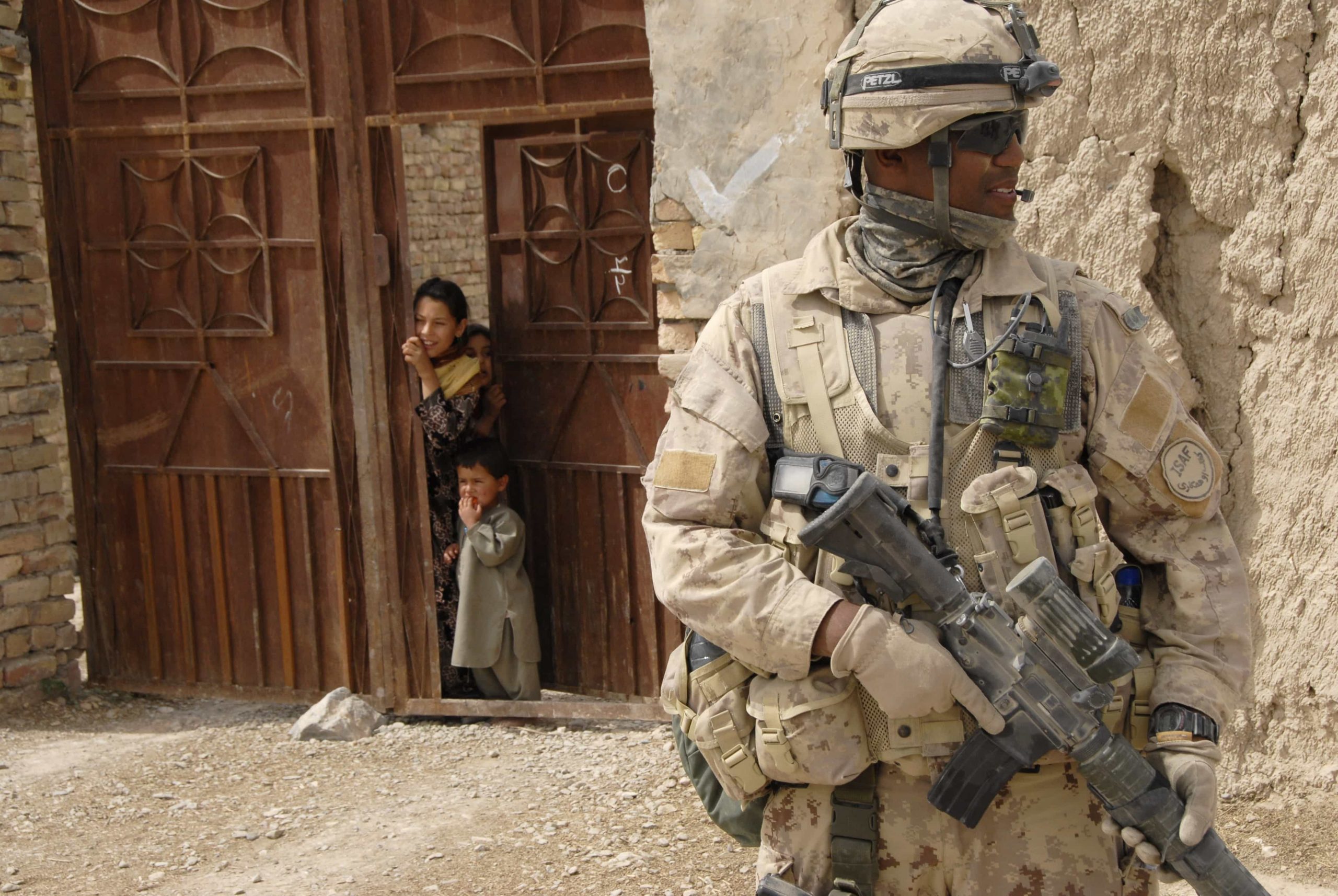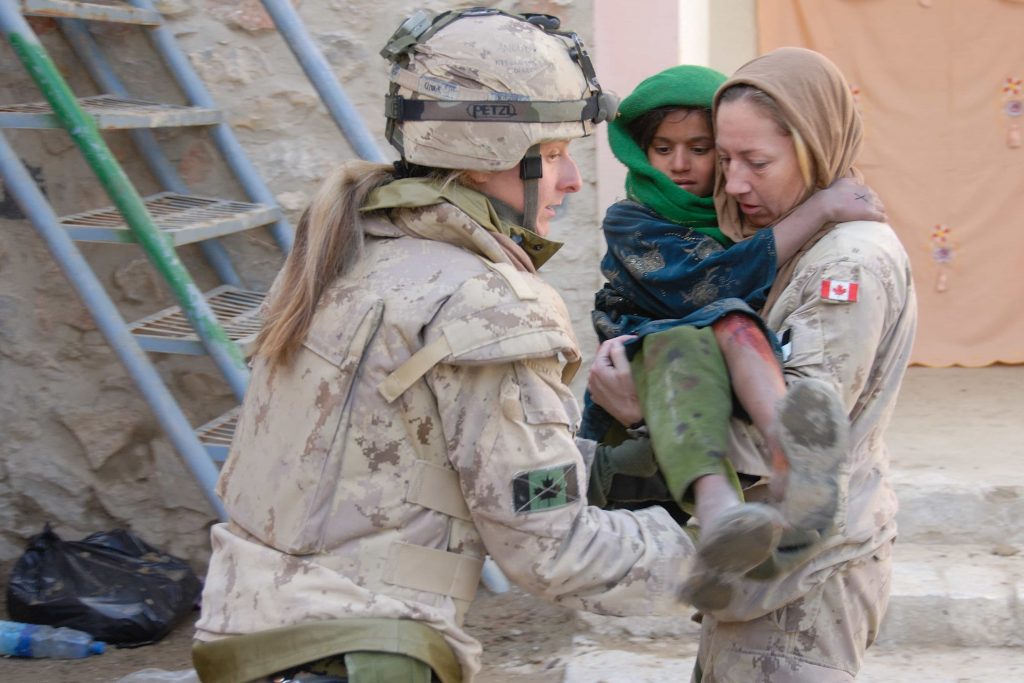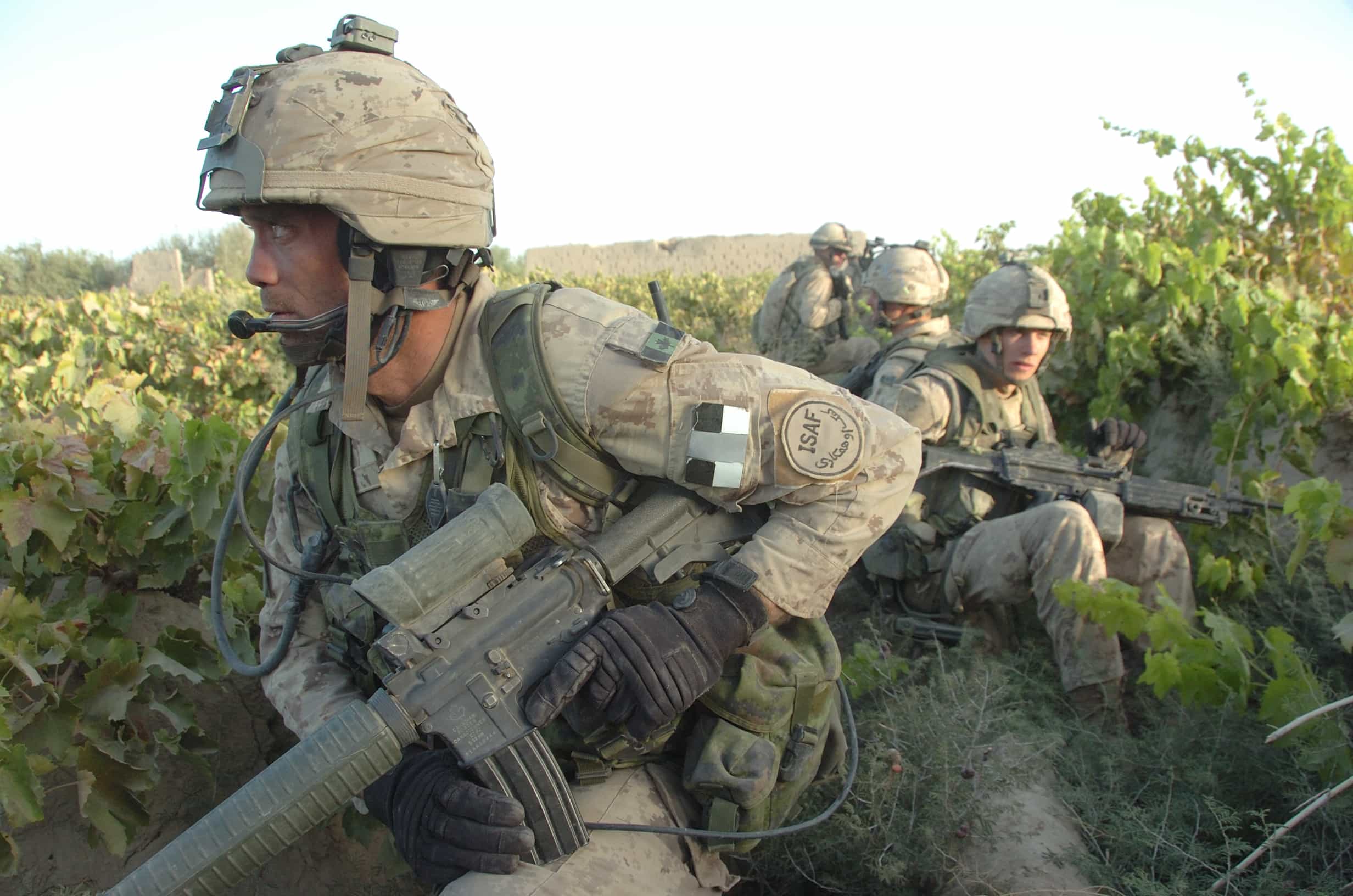
OCTOBER 2001–MARCH 2014
Historical Overview
On 11 September 2001, Al-Qaeda terrorists attacked the United States. The Taliban government in Afghanistan sheltered the terrorist group. A multinational military coalition, including Canada and led by the United States, invaded Afghanistan to overthrow the Taliban government and attack Al-Qaeda. Canada’s involvement included efforts to provide security to Afghanistan’s new government after the Taliban were ousted and aid reconstruction in a country torn apart by a generation of war. Later, Canadians contributed to the war against a growing Taliban insurgency.
Canada concluded combat operations in 2011 and left Afghanistan in 2014. In August 2021, the Taliban retook control of most of the country as American forces withdrew and government forces collapsed. Afghanistan’s future remains uncertain.
About the War
Canada committed forces to Afghanistan in October 2001. Shortly after, Canada sent a naval component to monitor the Arabian Sea and the region for terrorist activity. Canadian soldiers began to deploy to Afghanistan in December 2001, with the main battle group arriving in February 2002. Canadians initially protected Kandahar Airfield and supported American operations elsewhere in the country.
In 2003, Canadians joined the International Security Assistance Force led by the North Atlantic Treaty Organization (NATO) in Kabul, Afghanistan’s capital. In 2005, they returned to Kandahar province, in southern Afghanistan. Canada’s initial commitment of a provincial reconstruction team was broadened to include a battle group.
In 2008, the mission was expanded to include an air wing. Canadian soldiers fought alongside NATO and Afghan partners to secure key areas from the Taliban. Over six years, they were engaged in large-scale battles and daily firefights, braved roads seeded with improvised bombs, protected development projects, and tried to win the trust of the local population.
In July 2011, Canada ended its combat commitment in Kandahar but continued training Afghan national security forces in Kabul and Mazar-e-Sharif. In 2014, Canadian forces left Afghanistan, ending Canada’s participation in the mission.
Remembering the Afghanistan War
More than 40,000 members of the Canadian Armed Forces served and 158 Canadian soldiers died during the Afghanistan mission. Thousands of other veterans of the war were wounded physically and psychologically, leading to additional deaths by suicide.
Throughout the war, and in the years that followed, Canadians debated the scale and scope of Canada’s involvement in Afghanistan. While some questioned the war and its costs, others expressed support for the soldiers and civilians involved.
During the 13-year mission, Canada’s military played an important role in combating the Taliban insurgency and attempted to restore some normality to a shattered country.
In August 2021, American forces withdrew from Afghanistan, and Afghan forces crumbled. The Taliban regained control of the country. In the wake of these events, Canadian aircrews and military personnel returned to Kabul as part of a multinational operation to conduct emergency evacuations out of Kabul’s international airport. When their role in the operation ended, on 26 August 2021, they had evacuated nearly 4,000 Canadian citizens and Afghans seeking to flee Taliban rule.
The end of Canada’s contribution to the war in 2014, and the events that followed, brought personal and national reflection on what had been accomplished, and what had been lost.
Banner photo:
Canadian soldiers pause in a grape field during Operation Medusa, part of the September 2006 Battle of Panjwaii in Kandahar.
Courtesy of the Department of National Defence, AR2006-P005-0031
